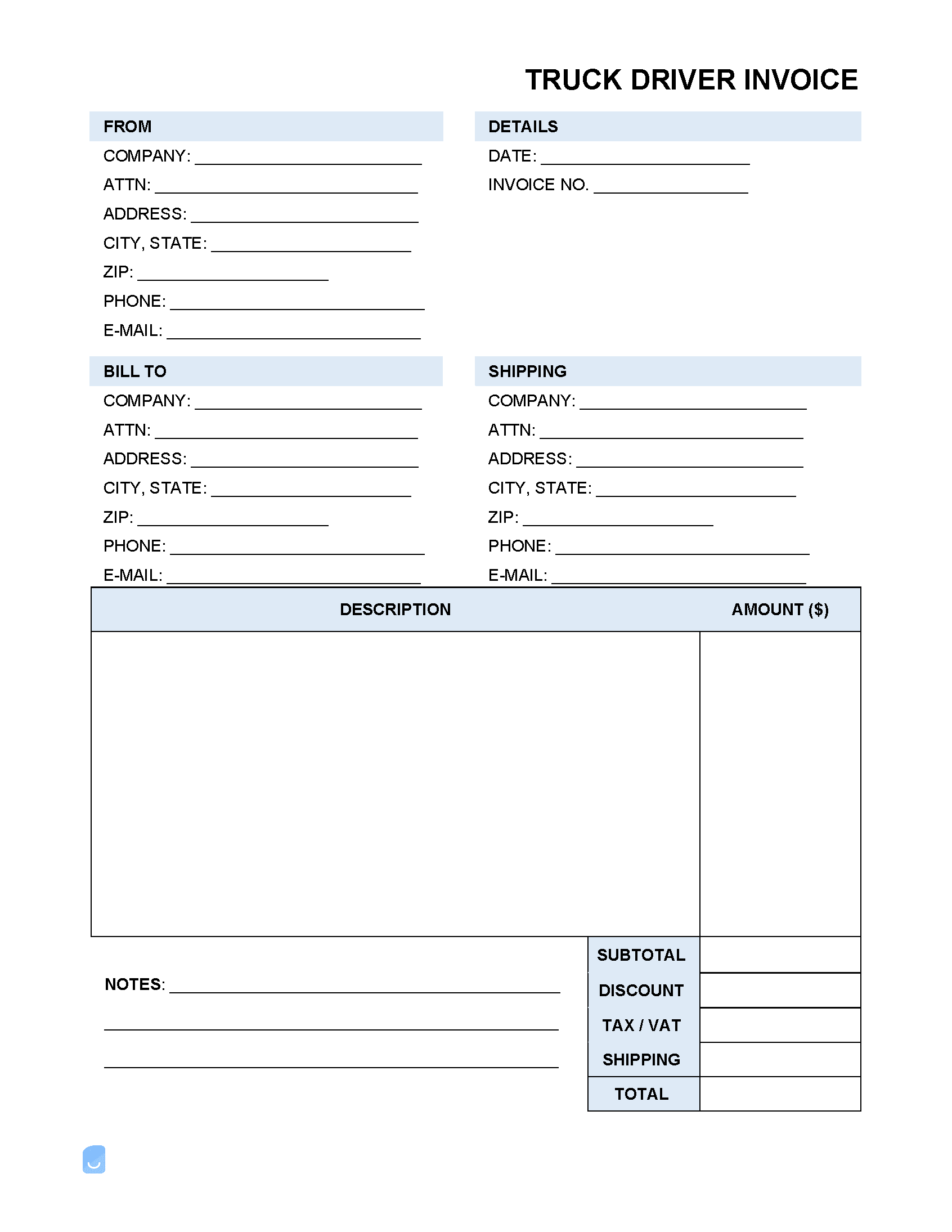Truck Driver Invoice Template
A truck driver invoice is a post-service billing document used for providing an organized list of the driving and pickup/dropoff related services that were completed for a commercial customer. Truckers can both work for trucking companies or on their own as independent truckers, and often operate a variety of commercial vehicles, including eighteen-wheelers (semi), dump trucks, flatbeds, tankers, refrigerator trucks, and several more.
What Does a Truck Driver Do?
Truck drivers operate large commercial vehicles for the purpose of delivering goods from one location to another over a range of distances, be it material, food, product, or other cargo. The farthest-driving operators are classified as “long-haul truckers”, which entails travel over several states, sometimes from one end of the country to the other. In addition to planning their route and driving to the destination, drivers may hold specializations that include cargo-loading and offloading, the driving of refrigerated trucks, and the transport of vehicles through the use of an auto-carrier, to name a few. In general, truck drivers will transport one of two types of loads, light and heavy. A load is considered heavy if it weighs more than 26,000 pounds; in which a set of stringent regulations and driver requirements follow.
How to Become a Truck Driver
To become a truck driver, the largest hurdle candidates will have to overcome is the earning of their CDL (Commercial Driver’s License). There are three classes of CDL; Class A, B, and C. Each designation permits the license holder to drive increasingly larger and heavier vehicles, with Class C consisting of smaller vehicles and Class A vehicles being over twenty-six thousand (26,000) pounds. As an overview, truck drivers should expect to complete the following steps in order to become a Class A truck driver:
Qualifications
- High School Diploma (or GED equivalent)
- Twenty-one (21) years or older (18 years if not driving cross-country)
- Drivers license w/clean driving + criminal record
- No preexisting medical conditions & strong eyesight
Truck Driver School – Not Mandatory, but Recommended
Schools and classes for getting students up to date on training can be found in community colleges, trucking company-run schools, and private for-profit schools. Training for the Class A CDL takes an average of seven (7) weeks, assuming the student is taking classes five (5) days a week consistently. Upon completion of training, students will be ready to study and take the necessary tests to earn their CDL permit. For students that feel they have what it takes to pass the CDL without formal training, there are no laws in place restricting students from foregoing truck driver school.
CDL Permit + Exam
After passing a state-specific general knowledge exam, which covers general safety, road hazards, driving a large vehicle, and the rules that accompany holding a CDL, student’s will be issued their CLP (Certified Learner’s Permit). This allows students to legally practice driving large trucks before applying for the official CDL examination. Upon waiting a minimum of two (2) weeks, students can request a date to take the official CDL exam. The exam includes two (2) parts – a written section and a driving section. Students should be prepared to supply their own vehicle for testing. If the student passes the examination, they will be issued their CDL and will be able to apply for open entry-level trucking positions. The majority of entry-level positions include long-distance driving, with short intrastate driving often requiring one (1) or more years of experience.
Truck Driver Salaries & Hourly Rates ($/hr)
The salaries of truck drivers vary anywhere from $30,000 to more than $70,000/yr depending on their employer, the length of distance typically driven, and the average type of load being delivered. According to the United States Department of Labor Statistics, “Heavy and Tractor-trailer truck drivers” make the following average salary and hourly rate: Salary: $50,340/yr Hourly Rate: $24.20/hr
